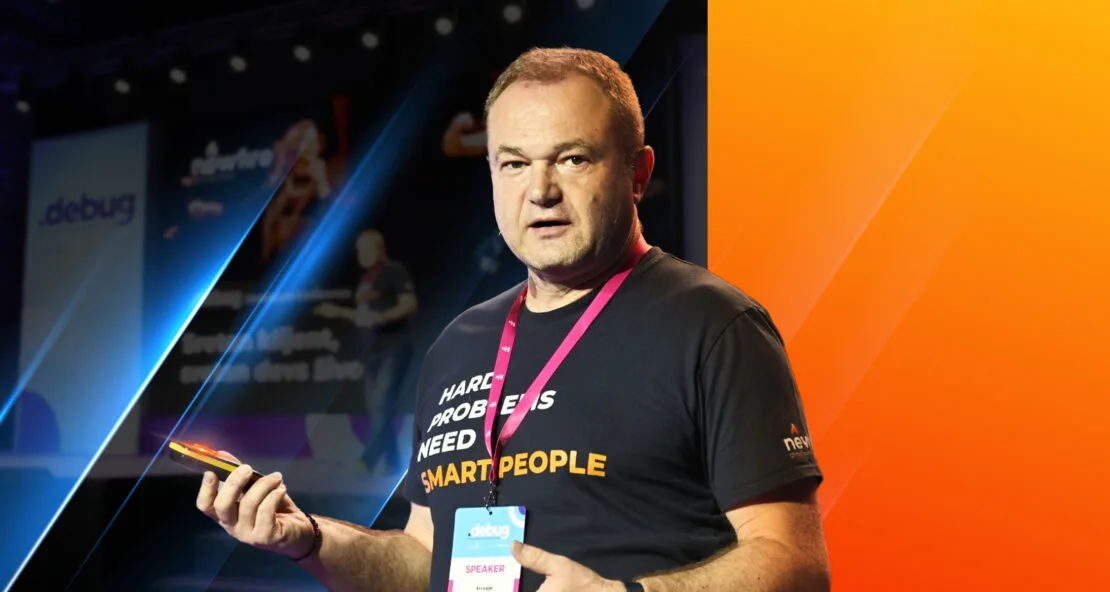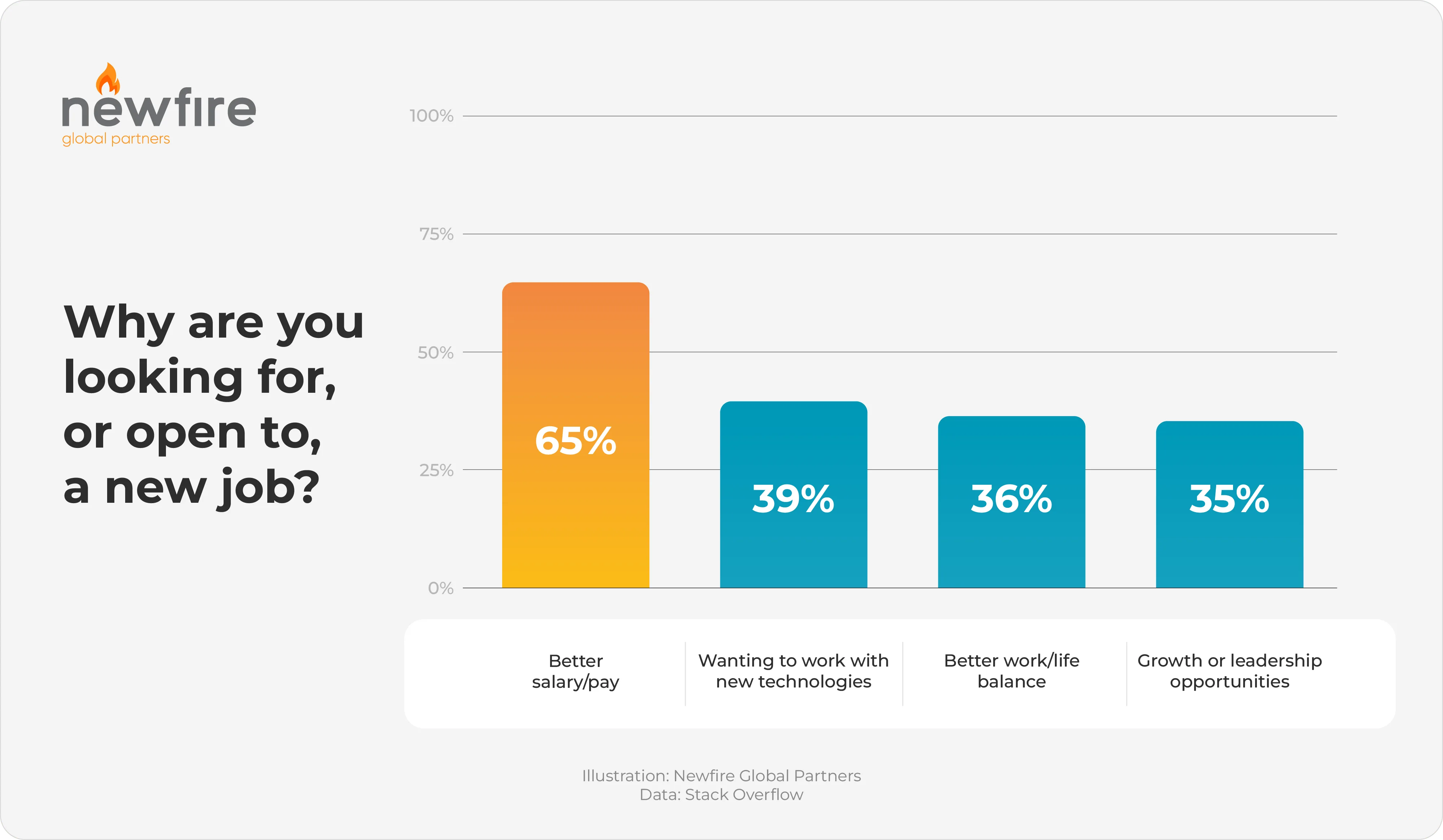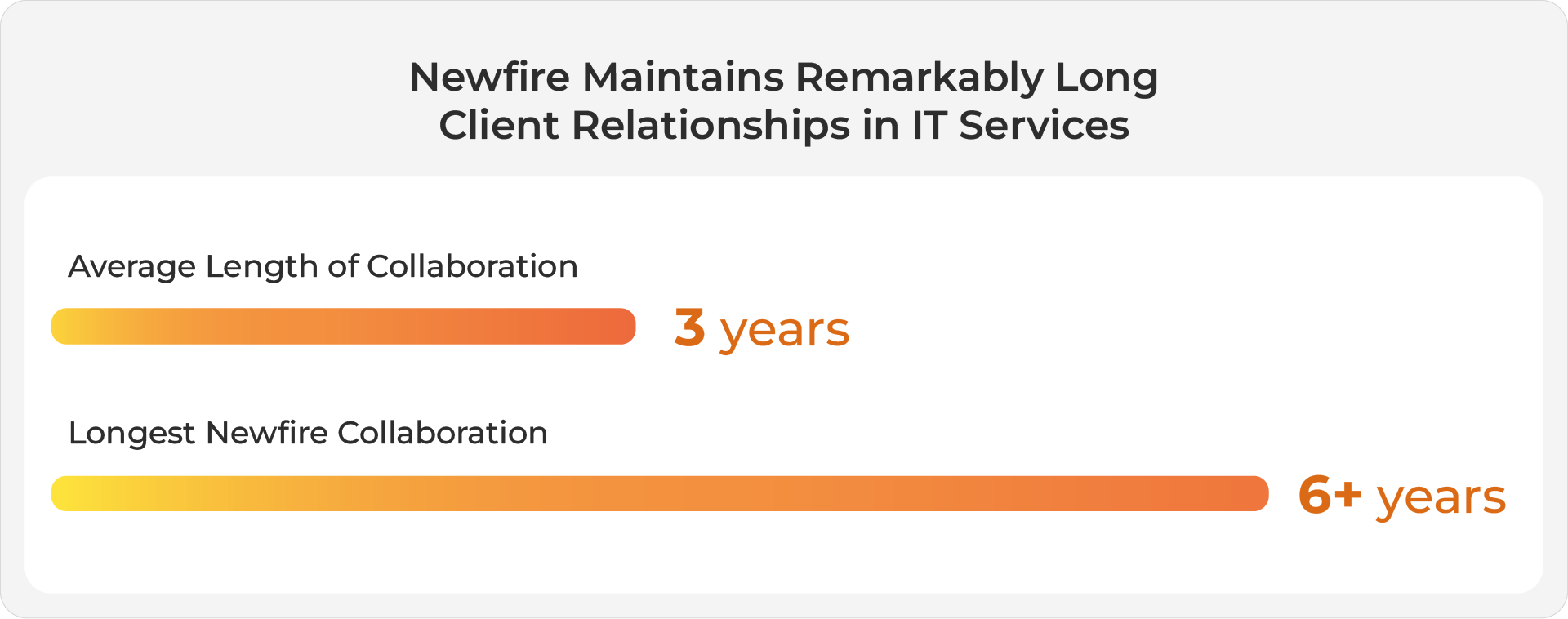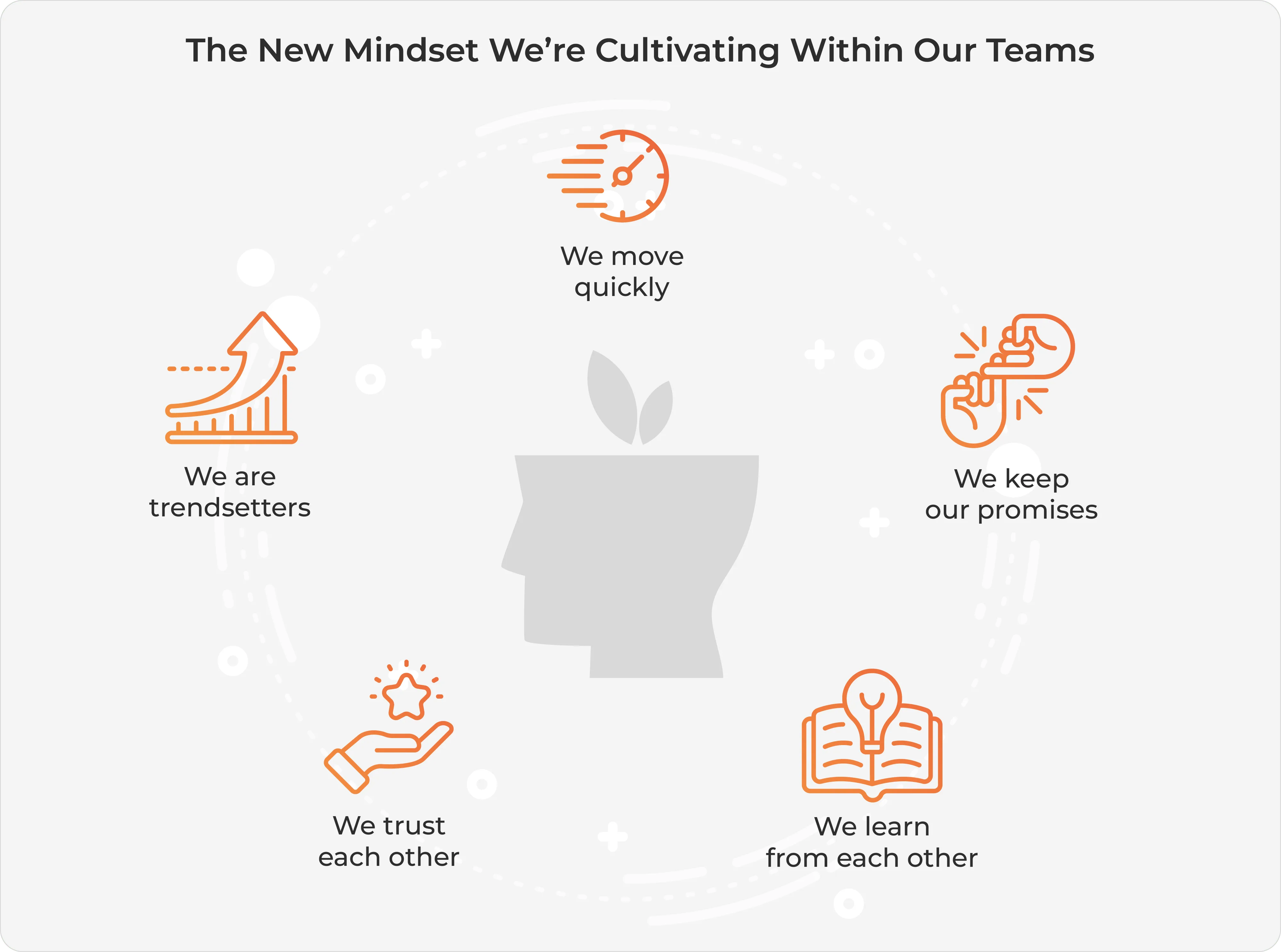Evolving Delivery into Customer Success at Newfire

When I first joined Newfire as Head of Delivery and later transitioned to Head of Customer Success and General Manager for Europe, I became part of an organization dedicated to balancing employee and client satisfaction. At Newfire, we uphold a culture of continuous improvement, particularly in how we engage with our clients. Motivated by this commitment and our customers’ growing needs, we have evolved our approach to customer relationships, turning delivery into customer success.
In this article, I’ll tell you how we achieved this and how our paradigm shift has helped us increase customer satisfaction and employee engagement while empowering us to build a reputation as a partner, rather than a vendor, in the IT services industry. I hope you’ll find valuable insights into structuring and managing your own engineering and product development organizations along the way.
Is the Current IT Services Delivery Model Outdated?
There is a special kind of efficiency to software development projects. As a purely digital product, today’s software brings together experts from different cultures and time zones who work in unison, tied together by shared programming languages, frameworks, and, vitally, a common company culture.
These software engineers deliver code and receive fair payment for their work for as long as the project goes on—a transactional yet effective process—after which their skills are utilized on a different project. Software gets launched, engineers make a good living, and everybody’s happy.
But should there be more to this process? Could we establish an environment where all this competence, experience, and technology creates even more value for everybody involved? Can software development projects become secure, sustainable, long-lasting relationships?
It’s no secret that today’s tech landscape is more competitive than ever. The fast pace of technology breakthroughs has made it more difficult to stay on the cutting edge, and investors, after a period of market retraction, are much more careful with their capital.
For these reasons (and more), it’s clear that digital product companies need more than working code delivered on time to stay ahead. They need guidance on new technologies and efficient workflows as well as assurances their teams will stay with them for the long run.
On the other side of the equation, research into the modern-day software development workplace indicates that engineers are still primarily motivated by salary but need much more to feel engaged at work. In that sense, Stack Overflow discovered that, on top of competitive salaries, developers seek out employers who will empower them to work with new technologies, help them maintain a good work/life balance, and provide them with growth and leadership opportunities.

Whichever way you look at it, the traditional delivery model, where code is commissioned and delivered as a simple transaction, no longer serves developers nor their clients, especially at the level of top performers with the ambition to gain or retain market leadership positions.
Evolving Delivery into Customer Success at Newfire
Newfire operates across four global regions (North and Latin America, Europe, and Asia-Pacific) and 20+ countries, with hundreds of senior engineers, designers, analysts, and product experts contributing work on some of the most advanced software projects in the world.
The services we provide to our clients go beyond the usual staff augmentation model, a staple of today’s software development. We use a combination of globally distributed teams, deep expertise across multiple sectors, and proprietary AI tools to advise on strategy, accelerate product development, and manage risk and costs for our clients. We like to say we’re in the business of creating market leaders.
But operating at this level comes with its own challenges. With a hundreds-strong team, how do you ensure all skills are adequately utilized? How can you guarantee everyone on the team is set on a path towards career advancement?
And what about the client? Do you understand their strategy enough to anticipate their needs? Are you proactive in taking work off their hands so they can focus on their value proposition? Are you involved enough to suggest improvements and accelerate success?
As Newfire grew, the way we handled employee engagement and customer satisfaction needed to evolve as well.
Why Change Something That Works?
This initiative, of course, came with risks because we were intervening with a process that fundamentally worked really well. Newfire had an impeccable record of delivering projects on time and within budget. We also pride ourselves on maintaining long-term collaborations with our clients, some of which have lasted over six years and are still ongoing.

Yet, we were conscious that we were still not tapping into our team’s full potential or providing our clients with the full spectrum of our expertise. To upgrade our level of service, we needed to change how we interacted with customers on an organizational level.
A Grassroots Movement
From the beginning, upgrading our approach to client relationships has been about the people most involved with it: Newfire team members dispatched to projects and the operators on the client side—engineering, product, and business leaders—who managed and worked alongside them. Therefore, the first step was to have deep conversations with both sides to learn what these actors needed to do their best work.
We asked Newfire team members what they needed to have more agency in their work and how we could ensure their skills and seniority were growing. As for the clients, we started talking about more than the project itself. We asked about their strategy, market position, and competition (both theirs and ours) to learn how we can contribute to each of these aspects on a higher level.
Delivery Becomes Customer Success
Fairly quickly in our discovery process, we found one issue that kept cropping up: structure. Both internal and external project participants agreed that the delivery process was complex and included a high number of stakeholders. The structure we had set up to ensure multi-point support for Newfire’s and the client’s teams was becoming cumbersome and confusing, detracting from the agility and straightforward communication vital for project health and team member engagement.
It was time to act. We addressed the structural issue by implementing a more linear organizational structure and unifying multiple stakeholder roles—managing teams, projects, and client accounts—into just one: the customer success manager.
The perfect candidates for this new role were our delivery and account managers, experienced tech experts in their own right. They were already deeply involved with projects and understood their technical, commercial, and strategic aspects.
In their new role as customer success managers (CSMs), they became a single point of contact for operators on the client side, with more decision-making power and new responsibilities, including understanding the client’s business landscape, strategy and goals, advising on solutions and technology, and ensuring Newfire has a holistic view of the client to enable us to maximize our impact.
My involvement with clients is continuous. We frequently discuss project parameters and challenges to optimize team structure and workflows, ensuring both short-term goals and long-term strategies are supported. A key element is people management—monitoring engagement levels, competencies, and equipment needs. My responsibilities also include financial oversight; maximizing the value our clients receive from their investment in Newfire is a top priority.
Tonči, Customer Success Manager at Newfire Global Partners
The Impact: A New World of Opportunities
To reiterate a previous point, we were taking a big risk changing our customer engagement methods in such a fundamental way. We wanted to change how clients perceived us by providing additional value, but that meant tampering with a system that both our clients and team members were already satisfied with.
Because of this, there was a fair amount of apprehension in the period immediately after we implemented the change. However, affirmation and positive feedback quickly followed.
Customer Success Makes Newfire a Preferred Partner for Clients
Clients quickly recognized and validated Newfire’s evolution into a customer success organization. After all, the concept of customer success was already familiar to them, as their products often include a CS benefit for their own clients. Overall, they understood the change we implemented and are convinced they can extract more value from our collaborations.
For them, having a customer success manager means that communication becomes more straightforward, and no information falls through the cracks, lost in a chain of stakeholders and communication channels.
The paradigm shift from delivery to success also opens up new opportunities for collaboration. As an organization, we gain insights into the client’s strategy, which means we can get involved earlier and contribute our advisory expertise on top of excellent talent in the execution phase.
Finally, clients trust us more. That empowers us to take on more responsibility and help them focus on the value they’re creating. For example, instead of coming to us with a list of roles they need to source for their projects, they involve us in the planning stages and entrust us with building entire teams that are perfectly aligned with their budget parameters, market strategies, and regulatory requirements.
Consequently, many of our clients stopped seeing us as vendors and now consider us a partner that actively contributes to their success from the beginning. Even when our customers have multiple vendors, we are perceived as the partner of choice, which was our ultimate goal.
Customer Success Fast Tracks Careers for Newfire Teams
Customer success managers also have a better view of Newfire teams and influence how team skills and expertise are utilized on projects. However, from the perspective of our own people, the biggest change came from structural improvements.
We implemented a linear organizational structure that introduced line managers and more emphasis on people management. The immediate effect was that team members now had clarity on who they reported to and who they could turn to with questions and ideas. Line managers are also responsible for aligning workloads with individual career paths and plans for professional development, providing more agency, motivation, and continued skill growth for our people in a much more structured way.
In short, the working environment has changed significantly for Newfire team members, providing them with more opportunities and control over their careers and giving rise to a new mindset within our organization:

Newfire Global Partners: A Customer Success Organization
I hope that our success story has offered valuable insights into enhancing your own engineering and product development organizations. Adopting a customer success approach has enabled us to increase client satisfaction and build the foundations for sustainable, long-lasting relationships, consequently opening up more career development opportunities for our team members. But that’s just the start.
Adopting a customer success approach in client relationships is just one segment of an organization-wide strategy to provide best-in-class services to our clients and support them on their way to market dominance.
In that sense, we have added top-level operators to our leadership team, including globally recognized experts as heads of key Newfire Practices, such as engineering, data, AI, and DevOps, to contribute deep expertise to our clients’ strategies. We’re also developing proprietary AI tools to match skills and expertise on our global team to client project needs, enabling quick project starts and rare talent sourcing.
With Newfire as a partner, our clients develop their products at maximum speed, with lower operational costs and minimum risks to their investment, so I invite you to reach out and partner with us today.
Hrvoje Strepački brings over 20 years of leadership experience in telecom, fintech, healthcare, IoT, and high-performance computing. As General Manager for Europe at Newfire Global Partners, he drives strategic growth and oversees diverse teams. Previously, Hrvoje led product development at Ericsson and Atos and now mentors future leaders as a lecturer at the University of Zagreb.